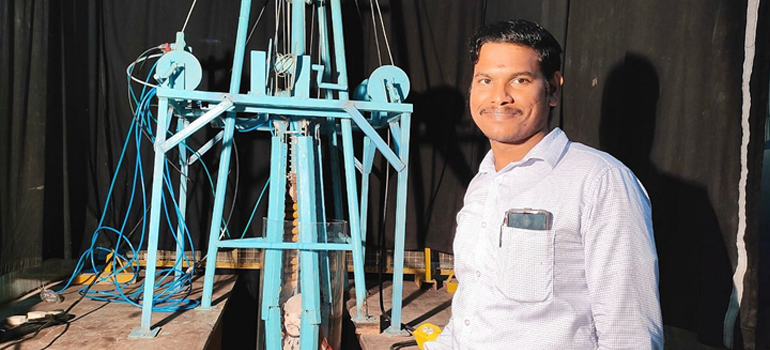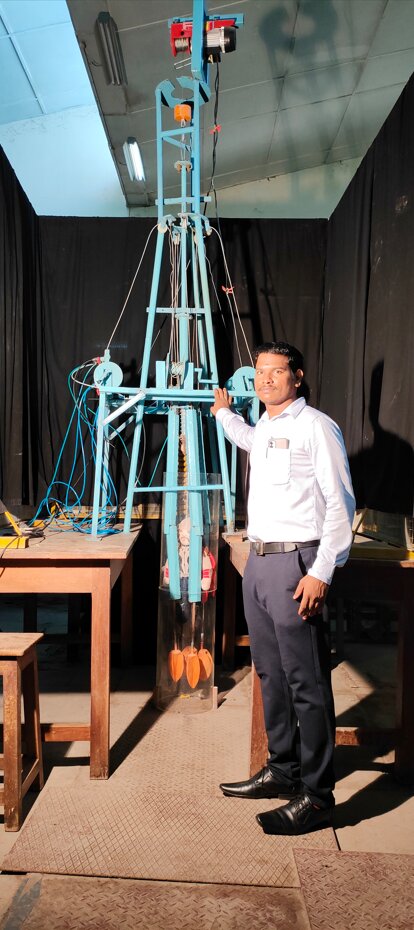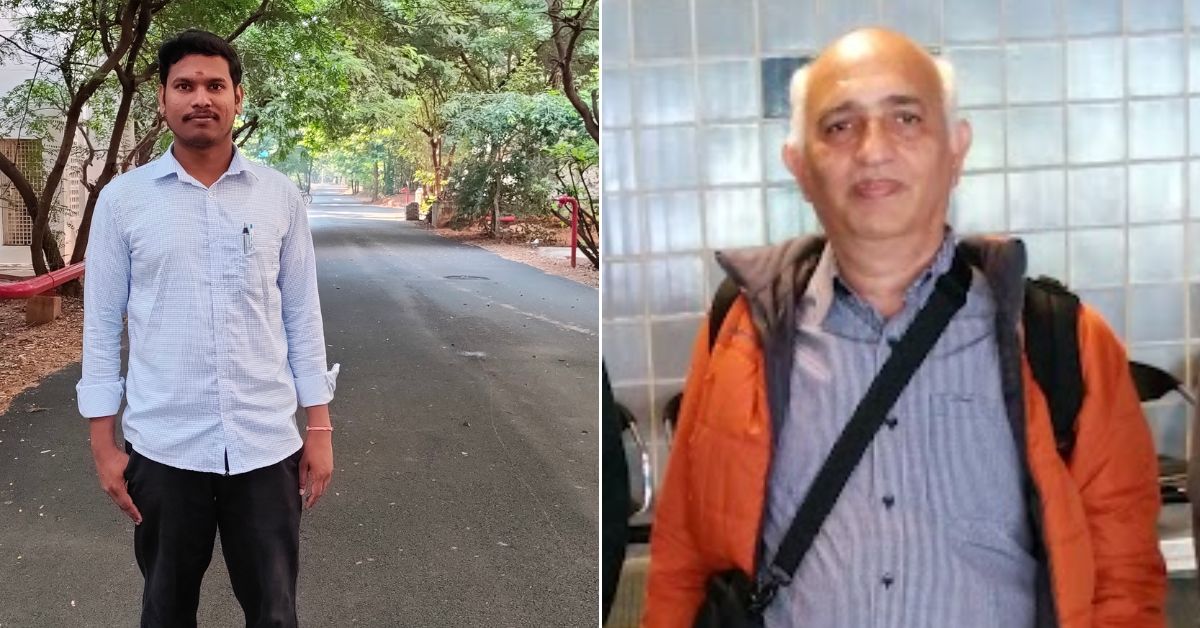
Sadham Usean Ramasamy, a PhD scholar student at IIT-Madras, has invented a machine that can safely rescue children fallen and trapped in borewells. He explains how the device works.
Sadham Usean Ramasamy, a PhD scholar from IIT-Madras, distinctly remembers the circumstances behind the tragic death of two-year-old Sujith Wilson, who fell into an abandoned and deep borewell in a village near Tiruchirappalli, Tamil Nadu, on 26 October 2019.
The incident took place near the child’s house in Nadukattupatti village on the previous evening while his mother was tending to his elder brother. Authorities soon commenced their rescue, which went on for more than 80 hours, given the interruptions caused by rain.
This wasn’t the first time a child had fallen inside the borewell, but the operation to rescue Sujith went viral on social media and mainstream news outlets. Despite many praying for his safety, the child was confirmed dead by the authorities in the wee hours of 30 October.
Following his last rites, celebrities and politicians across India offered their condolences to the family and paid tribute to the young child. It’s an episode that never left Sadham’s mind, and everyday, he would discuss it with a professor from the institute’s mechanical engineering and his first mentor, the late Professor BVSSS Prasad.
Today, the PhD scholar has invented a tool called the Inflatable Borewell Rescue Device, for which he received a patent from the Indian Patent Office in September 2022.
“If a child falls into an open borewell, this Inflatable Borewell Rescue Device can be fixed to any vehicle or fire rescue vehicle. The child can be safely extracted from the borewell even at different hole diameters, positions, and borewell heights. In the recent past, many children’s lives have been lost to borewell accidents. This device will help overcome such scenarios in the future and provide the fullest safe extraction of the child. The Sujith incident was a real driving force behind my invention,” says Sadham.
Currently, the PhD scholar is working under the guidance of Prof Shilgram Tiwari and Dr Shyama Prasad Das from the department of mechanical engineering, through a PhD fellowship sponsored by ANSYS, a US-based engineering software developing firm.

The son of a farmer in Periyanagalur village, Ariyalur district, Tamil Nadu, Sadham remembers doing daily wage work with his brothers during school holidays to supplement the family income. Despite his circumstances, he was a bright student, graduating in mechanical engineering and doing his master’s in thermal engineering.
“My father and uncle always encouraged me to be a scientist and help society,” he recalls.
After working on a series of projects, he enrolled into IIT-M’s PhD programme in January 2020.
“The Inflatable Borewell Rescue Device with improved holder mechanism tool was one of my first projects at IIT-M, which I finished under the guidance of the late Prof Prasad. During the first year of the PhD programme, he inspired me to create and acquire cutting-edge technologies for today’s challenges, which would help society and be free of cost,” he recalls.
Following the Sujith incident and many discussions, Prof Prasad asked Sadham to create an innovative design that would help authorities save other children from such accidents.
“By November 2019, we had designed a 3D model. Prof Prasad and I agreed that the innovation should not be copied for profit by business people. So we filed a patent application in January 2020. After a final design review, we created a prototype model to test the function and principle of the mechanism, and began fabrication work in March 2020. We completed the fabrication part during the most difficult phase of COVID-19 and had it tested by the time we received the Indian Patent Office’s first examination report in December 2020,” recalls Sadham.
Following the issuance of a first examination report, the applicant is expected to respond to it within six months, failing which the patent application status will become abandoned. Both Sadham and Prof Prasad had prepared their rebuttal comments.
“My patent work was funded by Prof Prasad. In March 2021, however, he fell ill due to COVID-19. In the following month, my guide and mentor lost his battle to the virus. His death was a devastating blow, and it was the toughest moment of my life. Also, some of the components were in need of rework and re-fabrication amounting to a few thousand rupees, which was spent from my stipend. This created some serious financial issues for me personally,” he recalls.
However, Sadham didn’t give in. He submitted his rebuttal comments and encountered two hearings before receiving a patent grant certificate last month.
The machine works by fixing the tripod on the ground surface, and comes with an air compressor and oxygen source that can be connected to the holder base. The tripod ensures that the entire holder portion passes through the borewell.
To begin the process of lowering the holder into the borewell, wire ropes are slowly allowed to roll over pulleys, allowing the holder to descend the borewell by gravity. To carefully monitor the child’s location, the device comes with a camera. If the child is not in an ideal position, it is necessary to adjust the clamper and rotate the holder to achieve the proper position. When the holder approaches the victim, the oxygen supply valve opens.
A winch motor assembly allows wire ropes to open the holder hands as well as the cylinder with balloons as needed, and encompass the subject. Once the subject is safely secured, the main rope is slowly pulled so that both the holder and the subject are safely lifted from the borewell.
Thus far, Sadham claims that he has not approached any private or public sector organisations regarding his device. But he would be “delighted” if government agencies supported and advanced his invention in order to make it a compact and effective tool for assisting society.
“Prof Prasad mentored me to build the concept of proof. He also assisted financially and technically. ‘We are here to help society,’ my professor used to often tell me. All credit for this invention goes to the (late) Prof Prasad, my parents, friends and lab mates for their persistent support and motivation. I hope that down the line, this device can save more lives,” he adds.

Original News Link
https://www.thebetterindia.com/301486/iit-madras-phd-student-builds-machine-to-safely-rescue-children-from-borewells-sadham-ramasamy/